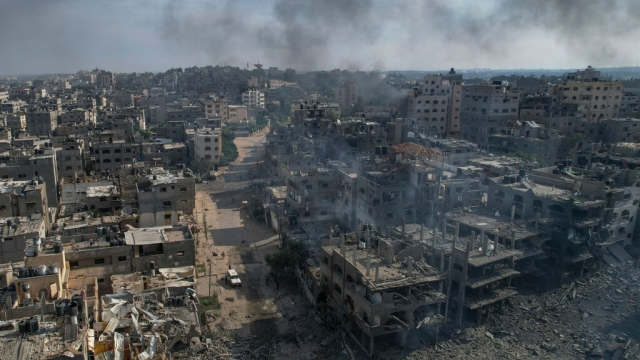Northern Gaza is a densely populated region — even after Israel called for Palestinians to move south.
Before the war, there were around 1.1 million Palestinians in northern Gaza and not all of them are able to leave or are choosing to leave, even with the bombing.
Looking at satellite imagery gives you an idea of just how dense the area is — as well as how much destruction Israeli airstrikes have caused.
Images from MAXAR show part of northern Gaza city near the Al-Shati refugee camp from earlier this week.
More images from Planet Labs show the Rimal neighborhood in western Gaza City three days after the war broke out.
Should Israel move forward on its promise to invade, areas this densely packed would become very dangerous for the IDF and even more dangerous for the civilians staying behind.
One analysis from The New York Times said it'd produce some of the fiercest street-to-street fighting since World War II.
The fighting won't only be on the streets, either. Hamas and its allies have used and expanded a vast network of tunnels that have been dug during their years-long control of the strip.
Some of these have been shown off in propaganda videos from the militant groups while other tunnels have been showcased by the IDF before they destroyed them.
Hamas has made it clear that the tunnels will be used as a means to capture enemy soldiers, store weapons and supplies, and to strengthen guerrilla fighting tactics.
Israel's military has claimed it has targeted these tunnels with airstrikes , but it's likely there are many more than what they'd be able to take out from the air — especially if they want to avoid civilian casualties.
SEE MORE: What would it take to win a counterinsurgency war in Gaza?
"In a way, that perception, that if you're in a UN building, then you're protected, or at least you're supposed to be more protected than if you're somewhere else in Gaza, but in reality, nowhere today in Gaza is safe," said Tamara Alrifai, director of external relations and communications for the United Nations Relief and Works Agency for Palestine Refugees in the Near East.
Another important factor moving forward is the ongoing hostage negotiations. Any large-scale incursion into Gaza could put Hamas-held hostages' lives in even more danger.
Hamas has already threatened to execute hostages earlier in the war and while there is no indication of this happening yet, it's something that may hang heavy over Israel's head if it decides to invade before they're freed.
There are a lot of unknowns when it comes to Israel's ground invasion: When are they planning it? How far into Gaza do they plan to go? How long will it take?
And while those may take a while to answer, it's clear that the toll has the potential to be very high — not only for the IDF but also Palestinians.
Trending stories at Scrippsnews.com




